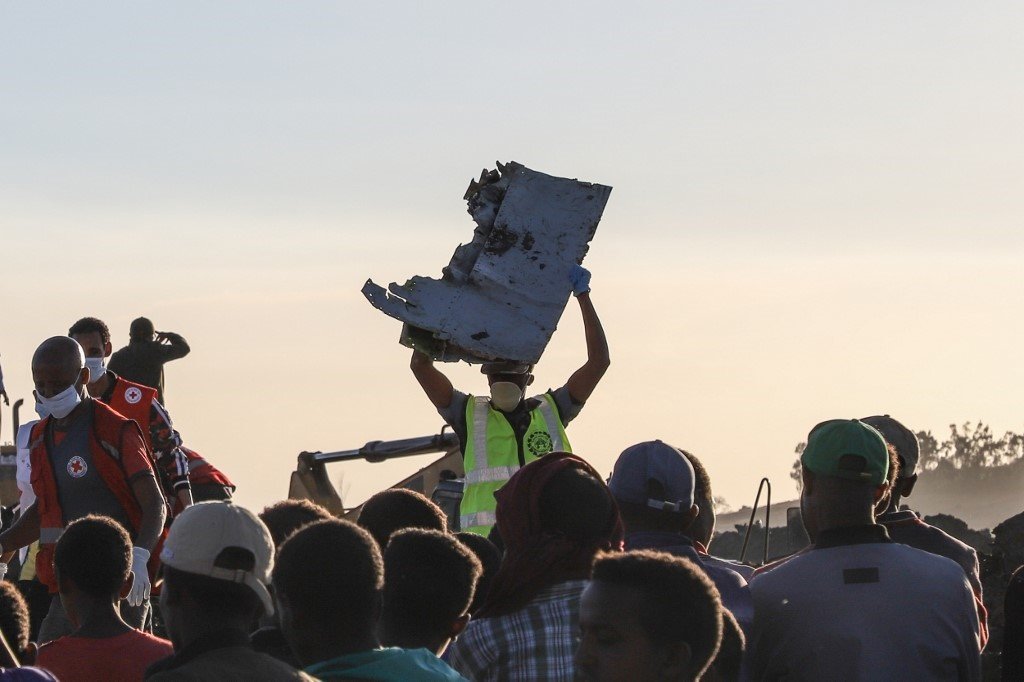

Gebru Ketema was outside tending cattle on the morning when Ethiopian Airlines Flight 302 plunged from the sky into a field near his village, killing all 157 people on board.
In the hectic days that followed, he and his neighbours welcomed rescue workers into their homes, offering meals and “sharing in the grief”, he recalls.
A year later, the crash site – now surrounded by an unfinished wooden fence – sees little activity besides visits from mourners bearing flowers.
“This place has become famous because of the crash. We’ve been told they will put some kind of monument here, but the plan appears to be stuck,” said Gebru.
Ahead of the one-year anniversary of the crash on Tuesday, Ethiopian Airlines has said little about how it might develop the site.
As recently as January, it hoped to use the anniversary to announce the winner of an architectural design competition for a memorial, according to a draft document on the plans seen by AFP.
READ | Ethiopian Airlines denies it tampered with flight records after crash
But that plan now appears to be on hold after the document drew pushback from some victims’ families, who objected to what they perceived as a rushed timeline, according to Zekarias Asfaw, who lost his brother in the crash.
The dust-up highlighted concerns about whether Ethiopian Airlines was committed to honouring the dead in a sensitive way, said Zekarias, who serves on a committee involved in discussions about a possible memorial.
“You’re rushing it because you’re not valuing it,” Zekarias said of the state-run airline, which did not respond to requests for comment.
“You have a company desperate to move on, and you have families saying, ‘No, we haven’t even had a chance to come together and start this journey’.”
The proposed design competition was expected to attract bids for both a monument and a park, according to the document dated January 24.
READ | Ethiopian 737 pilots followed Boeing guidelines before crash – WSJ
The monument could feature “contemplation areas” and a visitors’ centre, while suggested elements of the park included footpaths and trees.
After reviewing bids, judges were to make a selection by March 7, with a public exhibition for the winner to begin on March 10 — the one-year anniversary.
Objections to plans for the competition went beyond the tight turnaround, Zekarias said.
Some families pointed out that the document referred to victims exclusively as “men and women”, even though children were among the passengers.
ALSO READ | Ethiopian Airlines Crash: Comair pulls new Boeing 737-8 Max out of service
Overall, the document – which in several places cites Wikipedia as a source for basic information on the crash – was slapdash to the point of unprofessional, Zekarias said.
“As an Ethiopian, I’m also embarrassed by how they handled the whole thing,” he said. “The lack of professionalism, the lack of empathy.”
In the absence of an official memorial, at least two smaller sites honouring Flight 302 victims have been set up in the capital Addis Ababa in the past year.
At the headquarters of the Airline Pilots’ Association of Ethiopia, members named a football pitch after Yared Getachew, the captain of Flight 302 who had been an avid player.
READ | Ethiopian Airlines grounds Boeing 737 MAX 8 fleet after crash
A plaque for Yared is mounted on a concrete wall along one of the sidelines, bearing the inscription “FOREVER LOVED”.
Across town, the Holy Trinity Cathedral houses a memorial for Yared and the 16 other Ethiopian fatalities.
Plaques there feature two photos of each victim and a black-and-white Ethiopian Airlines logo.
WATCH | Black boxes show ‘clear similarities’ with Indonesian crash, Ethiopia says
The cathedral is the final resting place for dignitaries including former Emperor Haile Selassie and Prime Minister Meles Zenawi.
So it was only appropriate for Flight 302 victims to be honoured there too, Priest Hadis Abab Tsegazeab told AFP.
“They are here because Ethiopian Airlines is the biggest airline in Africa and because its contribution to the nation is not small,” Hadis said.
